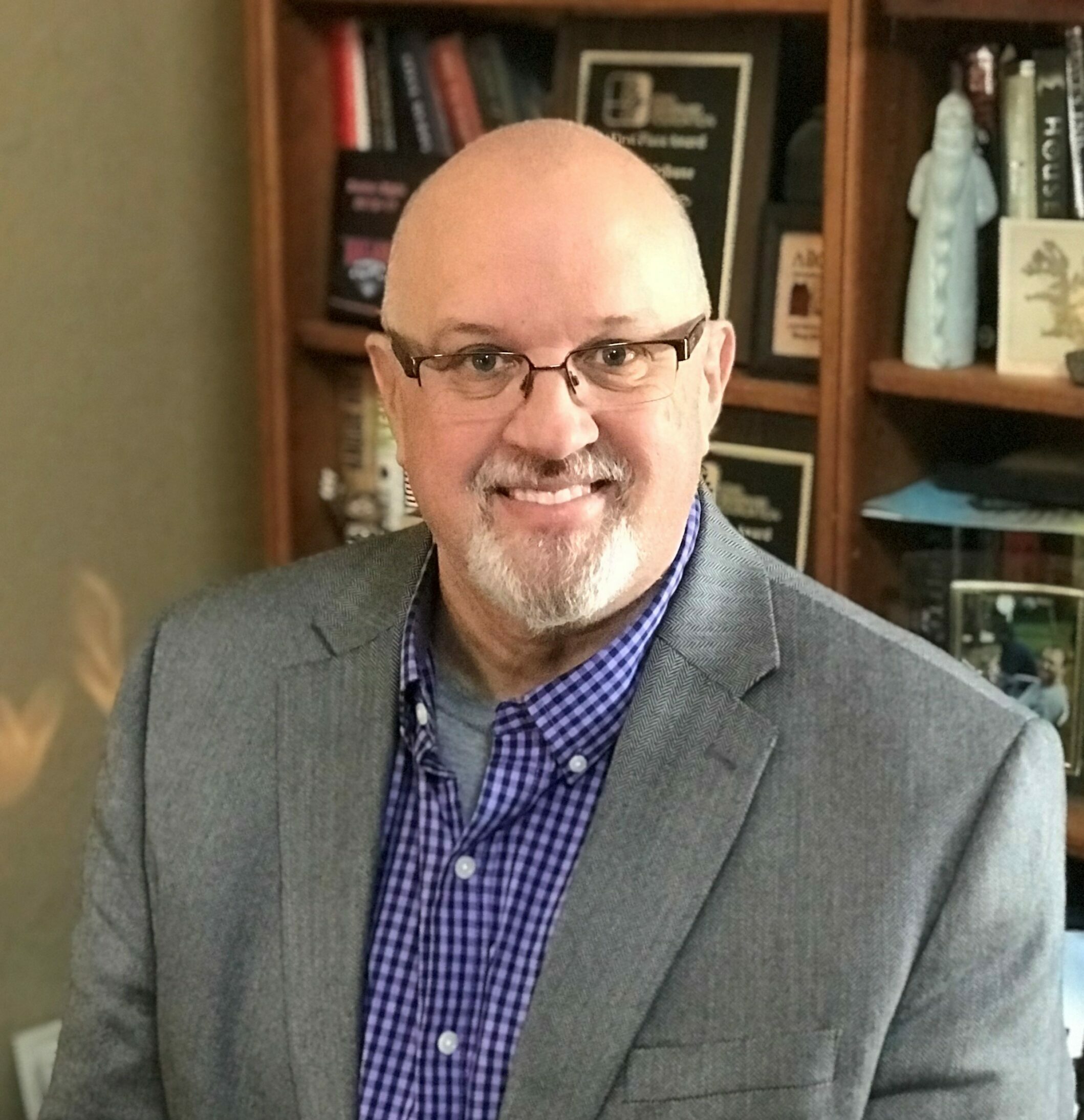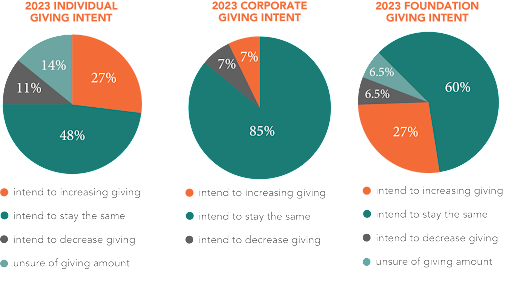Report analyzes state of charitable giving in Central Iowa
Report shows donors to maintain current level of charitable giving, want nonprofits to focus on collaboration

Michael Crumb Jan 19, 2023 | 12:20 pm
6 min read time
1,525 wordsAll Latest News, Arts and Culture, Nonprofits and PhilanthropyCharitable contributions in Central Iowa are likely to stay the same or grow in 2023, according to a report that is intended to help nonprofits better understand what donors are looking for.
The authors of the report, which was released today, wrote that the results are intended to help guide nonprofits and donors in their decisions following the disruptions that were caused by the COVID-19 pandemic.
The State of Central Iowa Philanthropic Giving Report, published by nonprofit consulting group Isaacson-Syverson Consulting and consulting firm Compendium Partners, takes a look at trends in philanthropic giving at the corporate, individual and foundation levels. The results are from a survey that was sent to 170 corporate donors, foundation representatives and philanthropic individuals between Oct. 25 and Nov. 15, with 44% of those responding.
The survey included 20 questions, some of them targeted toward individual groups or demographics.

Nikki Syverson, principal with Isaacson-Syverson Consulting, said the nonprofit landscape has “changed drastically” over the past few years and she hopes the report will be a tool nonprofits can use as they plan their activities in 2023.
“All of our nonprofits are overcoming struggles from the pandemic,” she said. “There’s been an increase in basic needs. We have workforce shortages and an uncertain economy. And I think with that comes that many nonprofits are not feeling certain about their future funding. And with so much uncertainty in the world right now, what are my donors thinking? Because of that, we think it’s so important for nonprofits to understand what’s driving and motivating our Central Iowa funders to help them better fundraise.”
Syverson, who has worked in the nonprofit and fundraising sector for nearly 20 years, said she hopes the report’s findings will help nonprofit development officials focus a little on what’s the best return on investment for their fundraising efforts.
“Don’t mail to corporations. Save your time. Save your money. They want to be emailed,” she said. “For individuals, so much of the effort is getting the gift, but what we’re hearing from individuals is that those development professionals need to spend just as much time thanking people for the gift. So does that letter come out time timely? Is it thoughtful? Are they building relationships? Those tasks can seem menial, but it’s really important and donors are placing a preference on that.”
Another takeaway for Syverson was that donors across all sources are asking for more collaboration among nonprofits.
“I think it’s really important for nonprofits to really think about how can we work together as a sector to make a bigger impact,” she said.
The report listed collaboration as the top advice funders had for nonprofits.
Those responding indicated they have strong confidence in the work Central Iowa’s nonprofit sector is doing. They also said nonprofits are meeting the community’s needs, have strong staff and are fiscally responsible, but they also felt there were opportunities for increased collaboration.
Syverson said the full impact of the pandemic on the nonprofit sector has yet to be seen. There is still a wave of funds from the American Rescue Plan Act filtering in for some nonprofits, which she said has provided some stability in the sector.
Once that money runs out, there will be an opportunity for nonprofits to reflect on who they are and how they can best serve the community, she said.
And that might result in some mergers of nonprofits to better serve the community, Syverson said.
“That’s just so smart because that giving pool isn’t getting any bigger but everybody is still asking the same people,” she said. “So I think this poses an opportunity as we’re coming out of this on how can we be stronger? Is it that we can be stronger together? Can we be stronger by just focusing on this part of our mission and letting this other part go? Hopefully it’s giving nonprofits an opportunity to really reflect on how they can be better.”
Other advice to nonprofits shared in the report was to continue working to build relationships, demonstrate the impact of their work, express appreciation to donors and be transparent in their mission and actions.
When it comes to giving, corporate donors who responded largely said they intended to maintain their current level of giving.
According to the report, 85% of corporate donors said they intended to give the same amount in 2023 as they have in the past, with only 7% indicating they were likely to increase giving. Seven percent indicated they intended to decrease giving this year.
Syverson said that having 85% of corporate donors intending to maintain their current level of giving is a good thing, given the current economy.
“I hope that’s reassuring to our nonprofits,” she said. “Corporations have been hit hard … so I think there’s been that worry ‘are they cutting back?’ I think corporations are being more intentional and really focusing their dollars.”
The report also showed that 60% of foundation representatives indicated giving will likely stay the same, with 27% saying they intend to increase giving this year. The remainder, split evenly at 6.5% each, said they intended to decrease giving or they were unsure of the amount they would give in 2023.
For individuals who responded, 48% said they intend to give the same amount, while 27% intend to increase giving. Fourteen percent indicated they were unsure of their giving amount this year, while 11% said they intend to decrease giving.


Above: What influences donors to give. Images provided by Isaacson-Syverson Consulting.
The report also looked at what influences a decision to give.
For corporate and foundation giving, 77% of those responding said they give to nonprofits whose mission aligns with their objectives. They also indicated contributions are sometimes influenced by a relationship with a nonprofit board member or employee.
For individual donors, 93% of those who responded said decisions are based on their belief in a nonprofit’s mission. They also indicated that giving decisions are based on their belief that their gift can make a difference, the report showed.
The 10-page report also indicated that across the board, corporate, foundation and individual donors overwhelmingly choose Central Iowa nonprofits for giving.

Sally Dix, executive director at Bravo of Greater Des Moines, said the report demonstrates Central Iowa’s strong nonprofit-donor ecosystem.
“Neither can thrive without the other; the community can’t achieve objectives without the nonprofits, and nonprofits can’t achieve objectives without support of the community,” she said. “We have a good, healthy ecosystem but we need to take care of it.”
Dix said having the data available for nonprofits is “incredibly important.”
“Nonprofit is just a tax status, they’re all businesses, and just like every other business they are trying to make data-based decisions, but there’s often less data about the sector as a whole so I think this will be really useful,” she said. “Having this kind of data and this kind of clarity allows efficiency in fundraising so [nonprofits] can focus on service and mission.”
Dix said arts and culture affect education, talent attraction and economic development, and it’s important for nonprofits to build those relationships with donors and make those connections between their work and communitywide priorities.
“The days of very niche siloed work are probably coming to an end for many nonprofits,” she said. “We all have to be looking more broadly, so I hope nonprofits can use this for a way to expand their definitions of impact to make sure they’re aligning with a broader donor base, which is important for sustainability.”

Kristi Knous, president of the Community Foundation of Greater Des Moines, said she was encouraged by the response from the donor community as it relates to nonprofit collaboration.
“We’ve long encouraged collaboration between nonprofit organizations, so that really spoke to me because I think it just validates that donors are calling for increased collaboration, which also many times leads to efficiencies and it just seems to make good sense for the community,” she said.
Knous said she was also encouraged to see the number of donors who either plan to give at the same level or increase giving this year.
“That should be encouraging to the overall nonprofit sector, but also to our community, because we’re not going to have a strong community if we don’t have strong nonprofits,” she said. “We’re not going to have a strong community and a strong quality of life, so to have donors say that they are either giving the same or will increase giving is super encouraging for our community and our state.”
Syverson said the plan is to do the survey annually.
“I think at first we’ll try it annually just to see what things change and to see if it merits doing it annually,” she said. “I plan on doing it again in the fourth quarter of 2023, and I might add some other questions or tweak them based on what we hear from nonprofits over the next couple of months. But I think it will be interesting to see how those data trends go with using some of the same standard questions each year to really help nonprofits focus.”

Michael Crumb
Michael Crumb is a senior staff writer at Business Record. He covers real estate and development and transportation.









